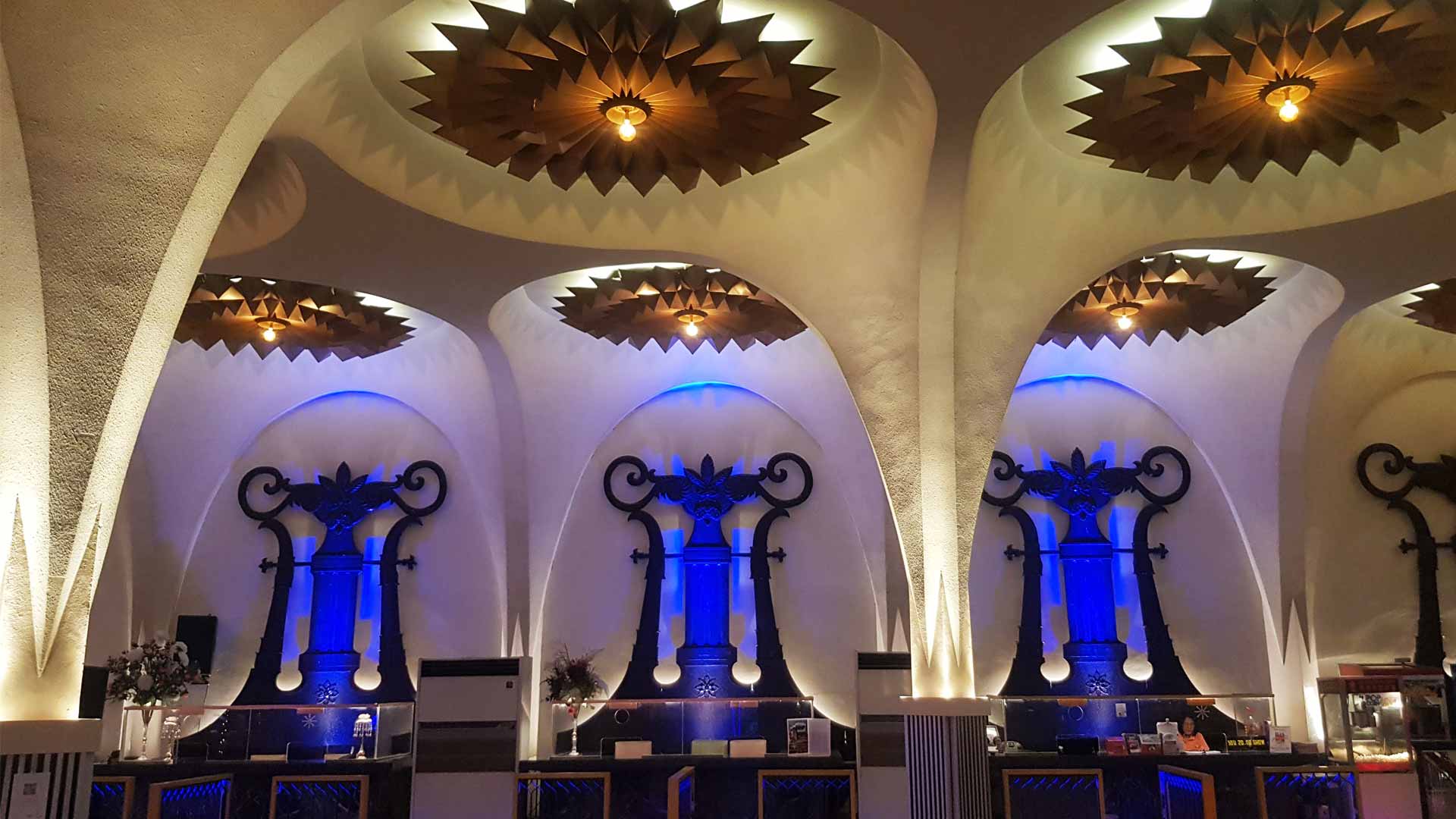A picture-perfect revival
“The Wall” was a collaboration project between Lighting Designers Thailand (LDT) and over 100 specialists in relating fields, which involved a temporary lighting installation for the Scala Cinema, Bangkok.
Taking place from January 26 to February 3, as part of Bangkok Design Week 2019, the team aimed to show how valuable this historical building is and how it should be a heritage location for future generations.

Scala is the last historic standalone single-screen cinema that’s still remaining and operating in Thailand, and was designed by Thai architect, Colonel Chira Silpakanok. With a guarantee of the Architectural Conservation Award achieved in 2012 from the Association of Siamese Architects (ASA), you notice from the very first steps into the lobby that every element – from floor to ceiling – was delicately designed and as a result is mesmerising.
It would never be enough to savour the beauty of the Art Deco-styled space and its renowned gold star-shaped ceiling details. But, unfortunately, the future of this valuable architecture is now unknown. However, what is known is that people have objected passionately to its demolition.

It’s clear that the design team wisely planned the installation. When you entered the building you were welcomed by a red carpet, projected with coloured light, along the grand staircase (that leads to the ticket booths on the upper floor) and some accompanying duck sculptures. (To my interpretation, they must symbolise the Peking duck restaurant on the ground floor.)

The grand crystal chandelier was illuminated with floor uplights instead of glowing from inside, to avoid modifying and damaging its body. While a number of gobo projectors cast patterned light on the floor, and sometimes moved upward to the ceiling, creating impressive dynamics within the space. Heading towards the upper floor, there was much more to come. Warm white LED strip lights were integrated behind the edges of the star-shaped iconic ceiling details to create an interesting silhouette. The bulbs in the middle of the “star”, which created a shadow of the stars on the curved ceiling, were also re-lamped, and narrow beam spotlights were applied to highlight the polygonal columns that rise to support the curved ceiling.
It was a marvellous feeling to see the whole illuminated scene in contrast to the dark blue twilight ambience outside the windows. I sat there, speechless, enjoying the moment for quite a few hours. A lot of people were harvesting their experience too, which had then become a new instagrammable anchor.

The thing that I appreciated the most was how the team played around in an existing building where everything seemed to be constrained. They had to figure out how to cable new light fixtures to the old circuits without touching the existing building structure and to integrate them with the lighting control system. The installation was operated in different lighting scene settings synchronised with the music at different times of day, starting from fully welcoming, relaxing, amusing, dramatic and the finale scene, respectively.
Movie ticket holders were privileged to visit the cinema via the pre-function area, which had two scenes, red and blue. The perimeter full-height curtains inside the cinema were adorned with linear uplights and the ceiling was featured by dynamic gobo projectors, creating an immersive phenomenon that people could be a part of.

It’s uncountable how many times I’d visited Scala before, but I could never feel more impressed by such a brand new immersive lighting experience inside the same old graceful architectural space that I’m quite familiar with. Even though it lasted for only a few days, it was good to witness that once in the history, when the legacy was revived!
Blog post by Chayot Kiranantawat / Images © Chayot Kiranantawat


